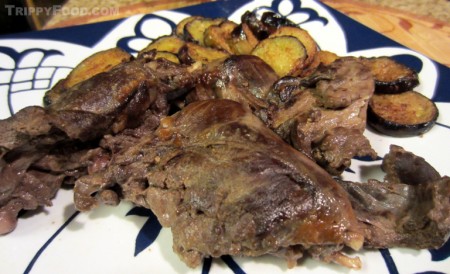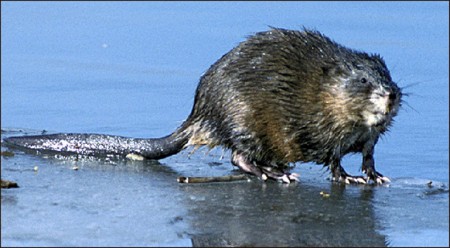Muskrat, North America
The consumption of large rodentia is usually a plot line for a survival drama or doomsday novel, and yet North American native the muskrat has been prized for its fur and meat for centuries. While not a true rat, the muskrat belongs to the same cute and cuddly family as the beaver, leading a quiet, peaceful life primarily as an aquatic herbivore like its cousin. Muskrats are found throughout most of the United States and Canada, and while they occur as far south as northern parts of Mexico, they are scarce in Florida (largely because alligators are thought to keep their population in check). The name comes from scent glands (located in the usual naughty regions) that are used to mark their territory, and yet when dressed properly (and I don’t mean in a fur coat), they have very little funk factor.
The meat of the muskrat is a dark, almost beet-red color with very little fat. It is high in protein and has a rich yet sweet taste, making it truly a treat to enjoy everywhere from the great outdoors to an upscale kitchen. The flavor ranges from duck to pulled pork, with no swampy unpleasantry that usually accompanies its over-sized relative, the nutria. I opted for an Asian-influenced dish for the single skinned and gutted muskrat I sourced from Exotic Meat Markets.com, using coconut oil to sear the meat before braising in sake with curry powder, basil and star anise, although I reserved some for a simple grill to take in the full flavor. One you get past the visual (a challenge made easier by cutting the meat up into small bony chunks), the muskrat is a versatile and flavorful source of protein that is thoroughly enjoyable. I have captured my culinary adventure on video, and the preparation is absurdly simple should you decide to try my cooking method. I highly recommend giving muskrat a try – the thought of turning down this gastronomic treat just plain stinks.



